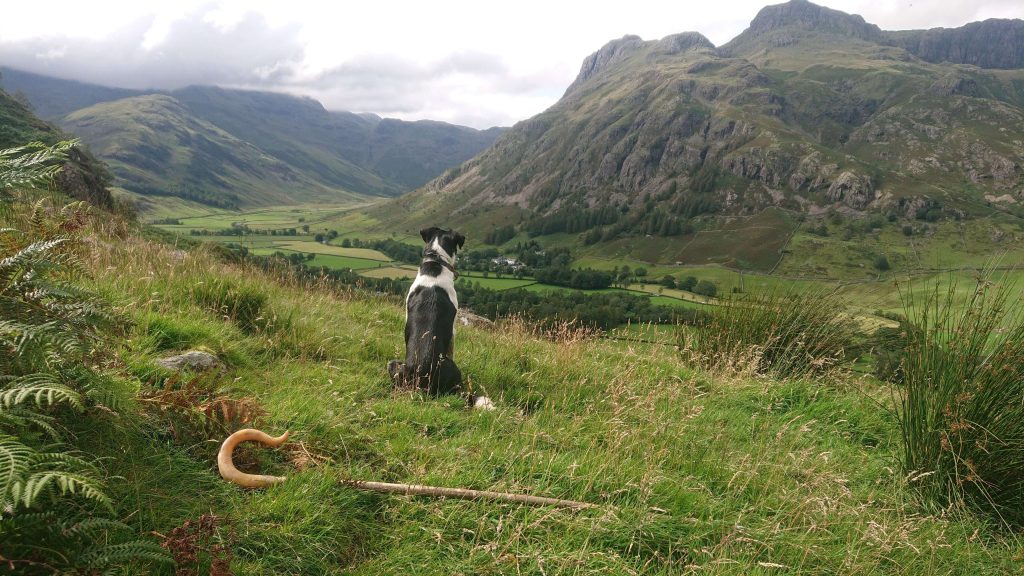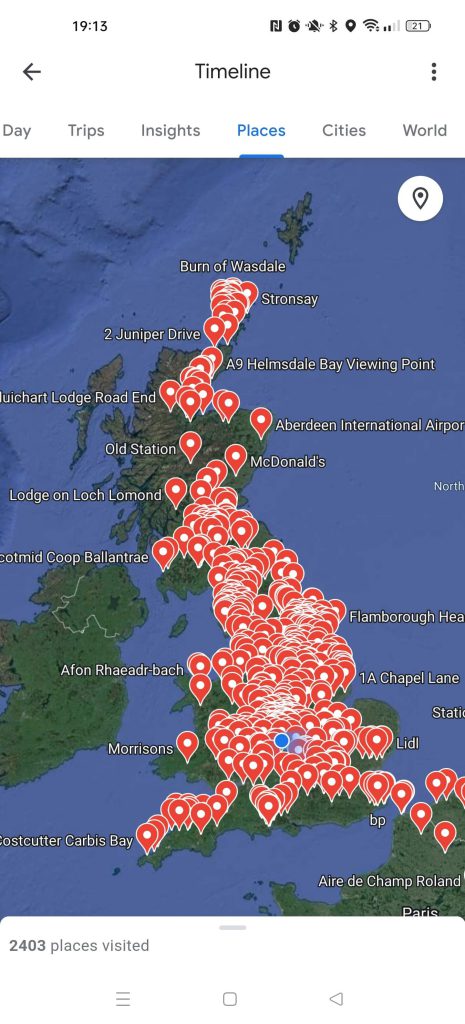Rachel Stratton – Rural Community Blog

For those who don’t know – I am ‘The Global Farmher’, I’ve traveled to 21 countries with my NZ heading dog, Jane, all whilst working within farming/agriculture. We arrived in Canada (No. 21) about a month ago now and have landed a job on a cattle ranch in Alberta. The boss is soon to go away seeding arable land and there are 400 cows to calve so Jane and I will be very busy once they kick-off!
The landscape varies, we arrived in BC and spent about a week organising car/phone/essentials before driving through the rocky mountains to central Alberta. From the mountainous terrains in British Colombia Alberta seems fairly flat, where we are you can’t see mountains and there are trees selectively grown for windbreaks – similar to the Canterbury Plains in NZ or even Norfolk flats in the UK. The shelter was a concern for calving these cows on this flat land – wind alone is not so much of an issue but wet and windy is when we could start losing calves.
The farmers here have wooden panels which act as ‘wind breaks’ as well as the tree line to provide some shelter for the calving cows. Here, we bed down every 2 days, the ground is starting to thaw but when it’s frozen solid and snow things are relatively clean. Without the presence of mud, I’m confident there are fewer diseases able to survive on the frozen ground and we’ve (so far) had no diseases picked up from waterborne presence (the umbilical cord or mouth). The cows are split into 3 groups, each in a large field, these groups were selected by age, so we can vary the amounts they are fed per group.

I’ve bought a couple of horses to train alongside my job – it’s been an extra source of income for me to have dogs/horses to produce alongside my ‘farm wage’. Every morning I ride around the cows, I much prefer to check stock on horseback, it’s quieter for one and most of the cows don’t notice a horse so stay lay down – if I’m on a quad or in a truck the engine noise makes them stand. Being at a higher level than the cattle means I can spot any fresh calves more easier too, otherwise I check on foot or have to move the cows around to get a good view. My morning checks consist of searching for freshly born calves, the health of the cows (any lame/uncomfortable ones), tagging and giving a pill to the fresh calves, and filing records on the newbies that morning.
After checks and any essentials (fixing fencing), I’ll start to load up the feed wagon. The cows get a mix of pellets, potatoes, canola straw, oat straw, corn silage, and a green feed bale of silage in a separate feeder. As ruminant animals with multiple stomachs, I think it’s really important to have a varied diet, there are many studies to suggest that a varied digest assists immunity.
On one of my first days at the new job, we went to Ponoka Auction, to buy some more in-calf cows to add to the herd. It was a great opportunity for me to see the standard of cattle present here in Canada and view the prices of such beasts. There was a herd disposal sale of Charolais cows, some were horned but with little option the boss bought them.
To my surprise, there were also some Speckled park cows (unfortunately I couldn’t convince him to buy one), a breed I was introduced to when staying with Anna Tarver and Nathan Back at Kotingotingo Speckled Park Stud in New Zealand. The prices were pretty huge and the boss bought 36 cows at a total cost of $85,000 – including market fees but averaging around $2,360 per animal. The quality of these cows is varied, they are on the larger side being Charolais, and most of the cows are Red Angus, Limousin, Hereford, and Black Angus mix.
The cows were delivered on a large stock truck – the same as the ones in NZ but much larger than those seen in Europe & the UK. For 36 cows a trailer wasn’t needed but they were spread on two decks of an artic lorry. Upon unloading, it was obvious they haven’t been handled, we processed them through the yards and gave them a rotavirus vaccine, a clostridial vaccine, lice treatment, a new tag, branding, and de-horned any which required it. De-horning is essential for safety:
more so for the other cows than even for us humans. A horned cow will always be able to bully the others for food and be higher up on the pecking order, de-horning means they all stand the same chance and there is less likely to be a severe injury to the other cows. Some of the cows ‘went for me’ as in charge, they aren’t used to being moved by people and we were warned one of the horned cows even stabbed a horse at the auction mart. To mix these cows into the main herd would cause several problems – likely spook up the main herd and make them less settled around people but be much harder to walk one in if there is an issue calving as they’d be in a much larger open space.
At the moment they are in a carrel pen – smaller and they have access to feed and water, we give them a bucket of pellets every day and walk around them, I like to talk to them, and get them used to my voice. In the carrells, we have ‘open cows’ (not pregnant), young bulls, older bulls, and early cows that have calves on foot. All these pens have tractors and quads, and I ride past them every day, they soon become accustomed to us and hopefully should relax around people.
So far the cows are great mothers, the neighbor’s bull broke out into one of the herds which has meant we’ve had some early calves. It’s not ideal in these temperatures – almost all calves go into a ‘warm box’
to dry off and get some heat into them before returning to their mothers. The cows have all accepted their calf with no issues if taken away – this is great as I’ve found that once removing a calf it smells different and we could have problems taking them back to their mums.
I’ve had one sick calf who I struggled to save, he inhaled birthing fluids so had a wheezy breath and was tubed with colostrum and put into the warm box, to prevent pneumonia/infection he received Biomycin and Metacam (for pain relief) the next day, Resflor (Canadian version of Nuflor) a longer acting antibiotic. For about a week he was looking perky and I was hoping he’d make a full recovery, unfortunately, he went downhill, and I consulted other ranchers – who all suggested what I’d already done and even face-timed a vet in NZ.
One of the benefits of farming around the world means there is always a vet awake in the same time zone as you, with veterinary advice he was tubed with bicarbonate of soda (for potential acidosis) and given the strong antibiotic Micotil. Micotil is available for the farmers to treat themselves in Canada, it’s illegal in Europe and pretty potent – with only 1ml per 50kg. It’s also fatal if I even scratched myself with an old needle. A subcutaneous injection means under the skin – I think the neck is best in calves and they have less ‘wiggle room’ and you can select a more accurate site than a leg. Unfortunately, he passed and I was gutted; it doesn’t get any easier, in a different country, farm, or ranch, situation, it always sucks to lose an animal you’ve worked hard to save.
The main group of cows is due to calve on the 1st of April, so far some are ‘bagging up’ and showing signs that we might have some sooner. I would expect a few premature and any twins to be earlier, of course not all 400 will calve on the first due date but with a large number of bulls serving them I’d hope they will be quite close together. Once calved, we rope the calf, and tag it with the same number as its mum (they get their tag at weaning), whether on their left or right ear depending on their gender – women are always right, they receive a pill to prevent any infections or diseases and are recording in the calf log.
I’m looking forward to some big weeks calving, the days roll into each other. In my experience, if fed later on in the afternoon the cows don’t calve so much in the night time, we have planned to feed at 5/6 o’clock in the afternoon and do a final check at 10 pm, leaving them the night until 7 pm, obviously this may change if there is bad weather, etc. I’ve found that bothering them during the night can cause more issues than it solves and the boss here is in agreement.
I feel very respected within my role, I’m often asked for my opinion or what I’ve done previously in other setups, I think that this is key for employers to progress – learning from what others do and implementing it into their system. I believe that any good farmer should be able to answer the question “Why do you do it like that?” with an honest and detailed answer, rather than “that’s what my dad did” as a means to better their system.
Rachel – @theglobalfarmher



